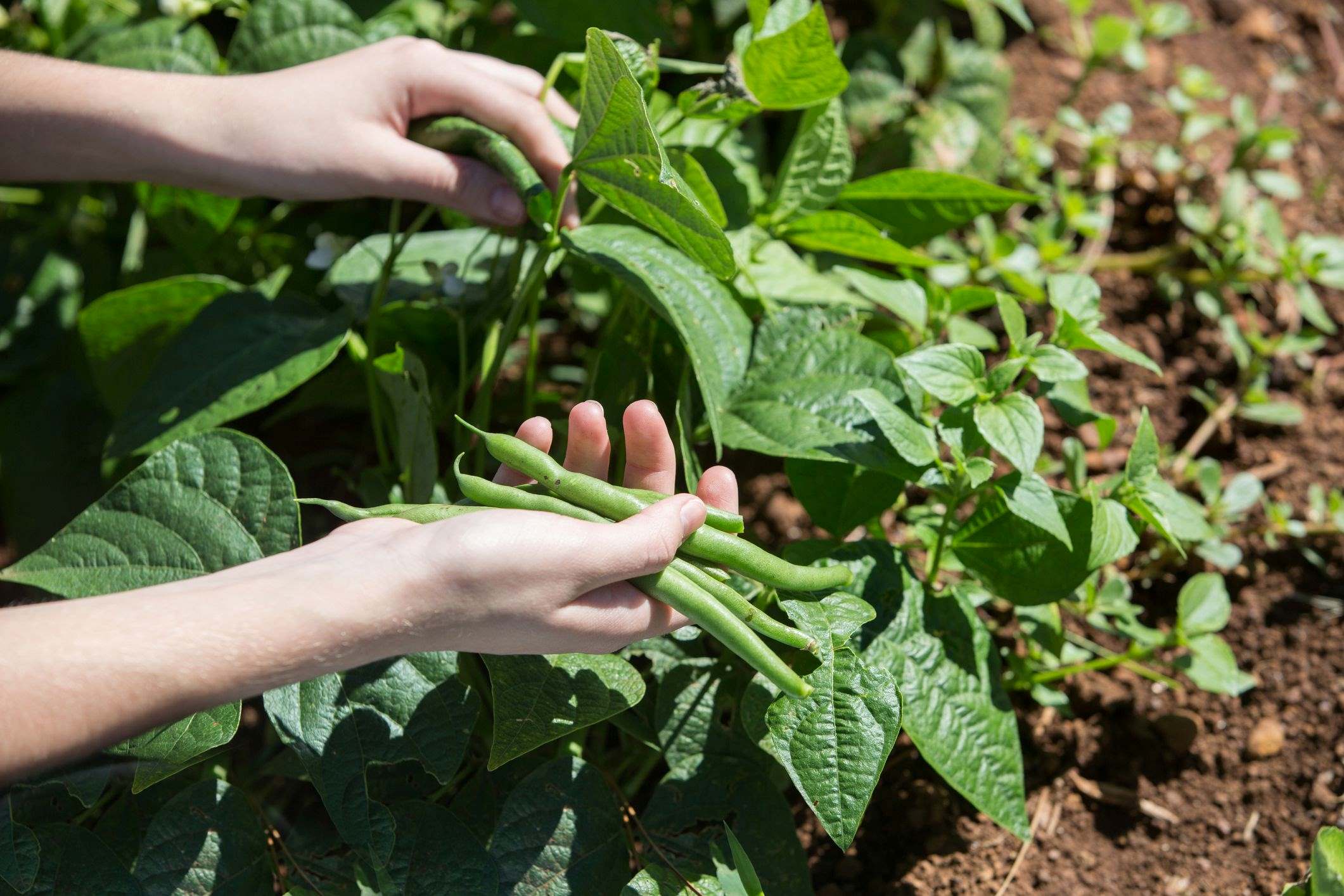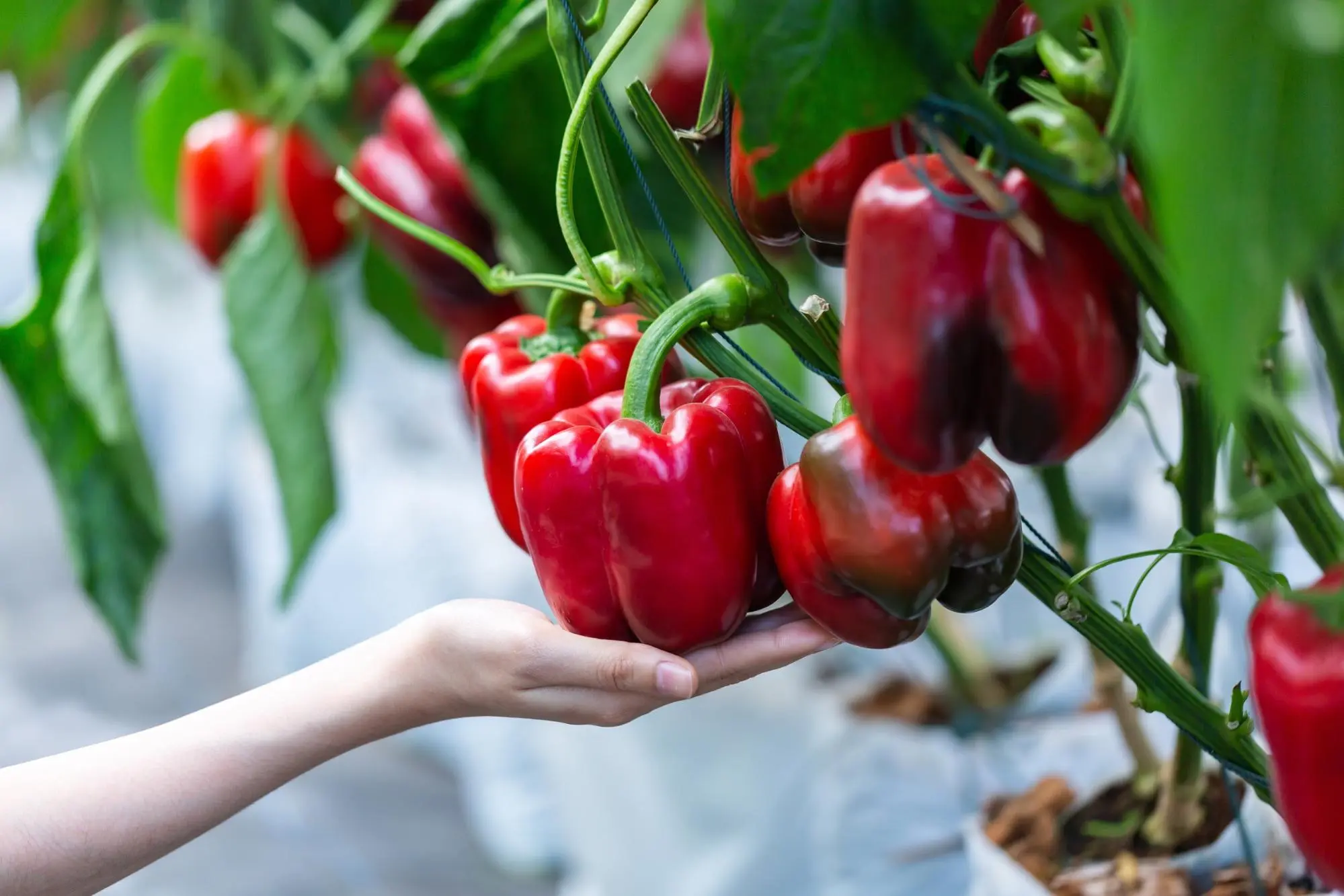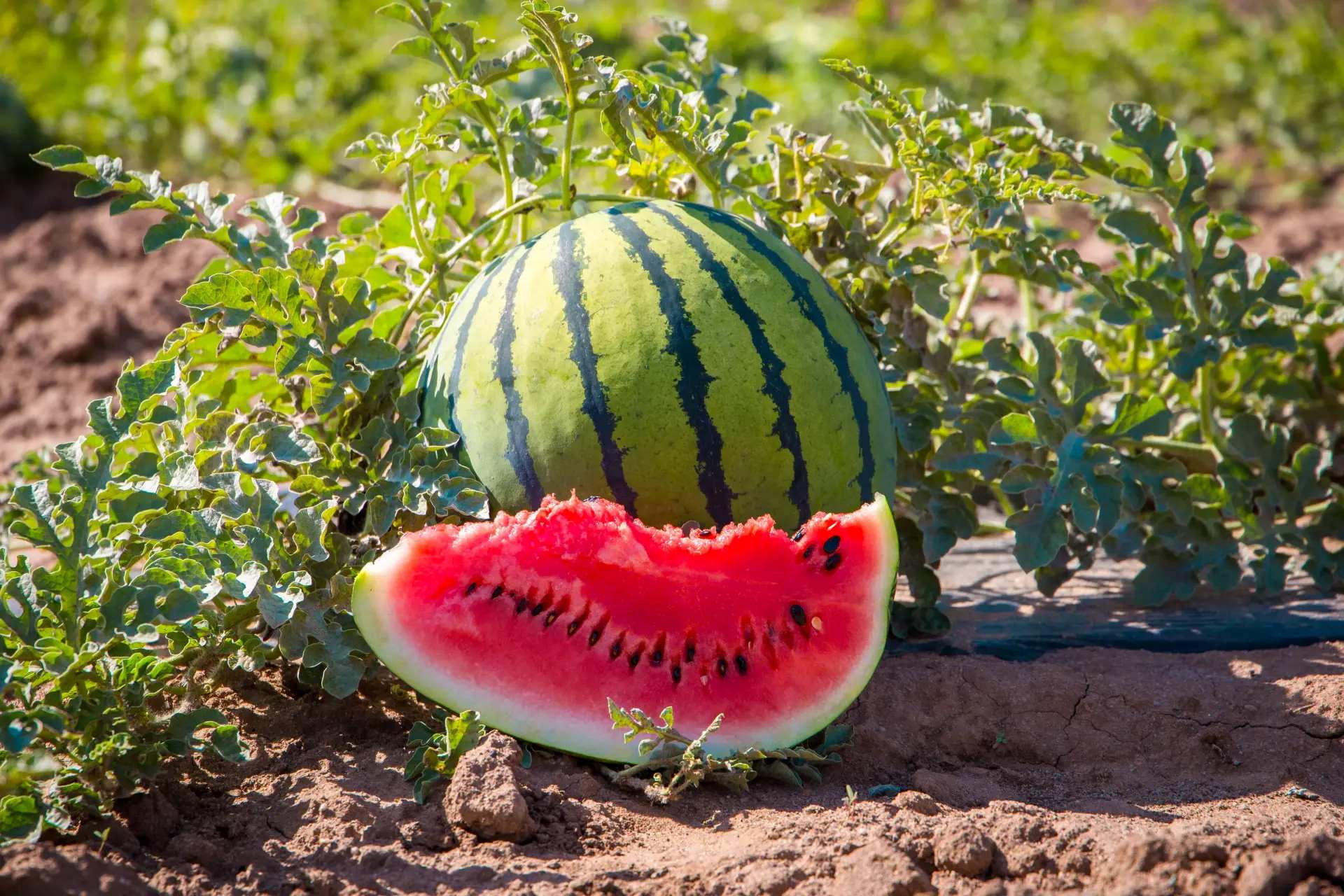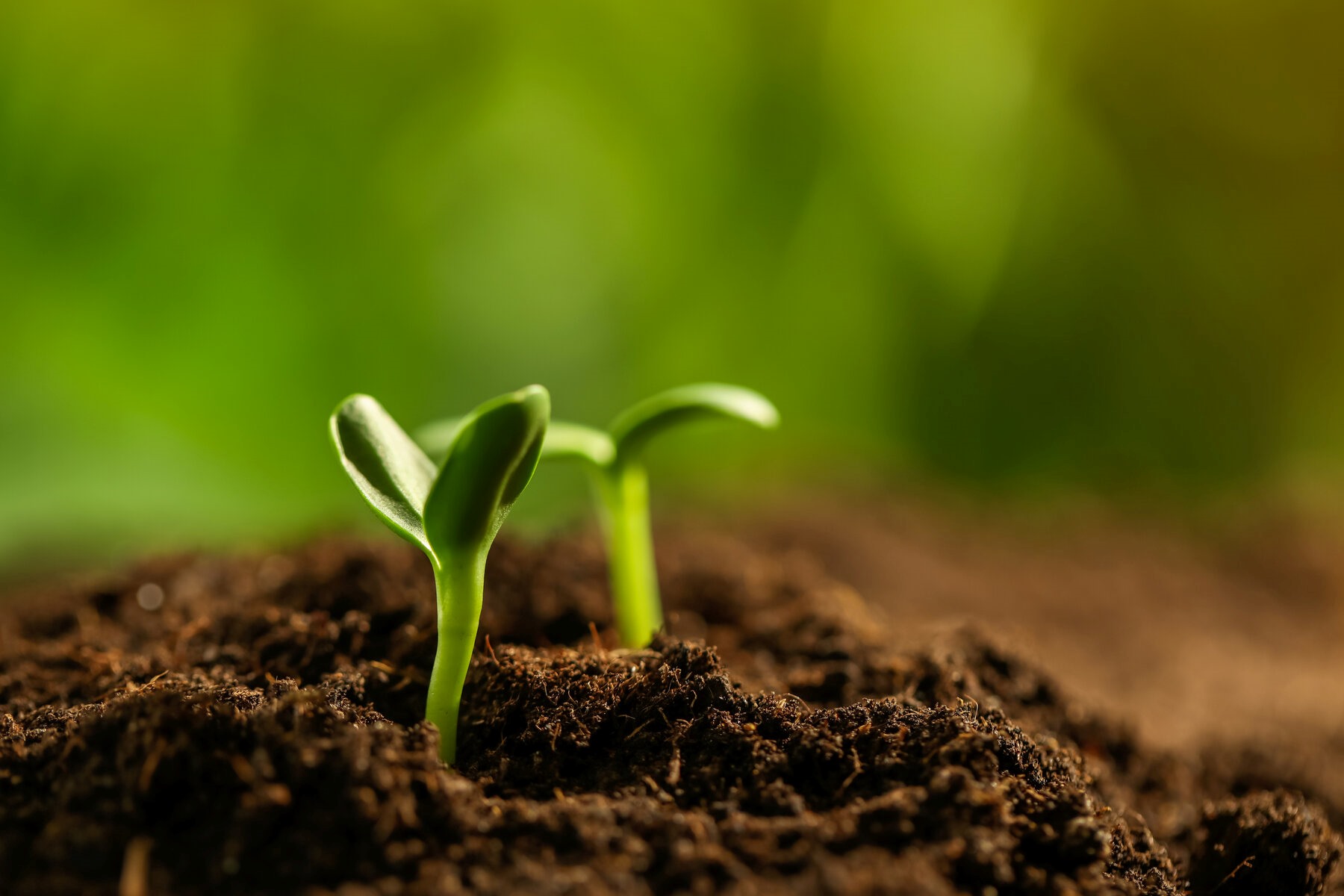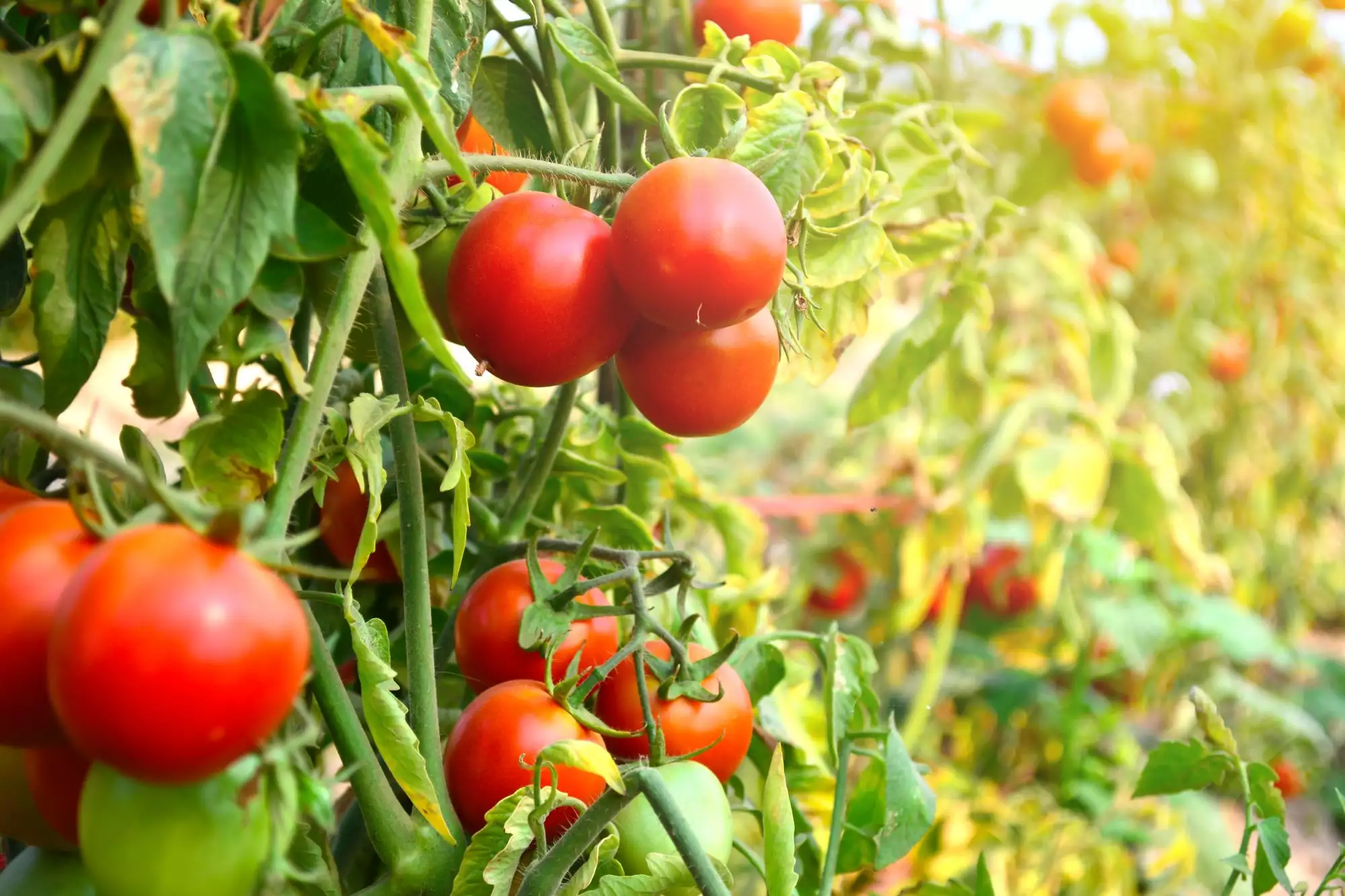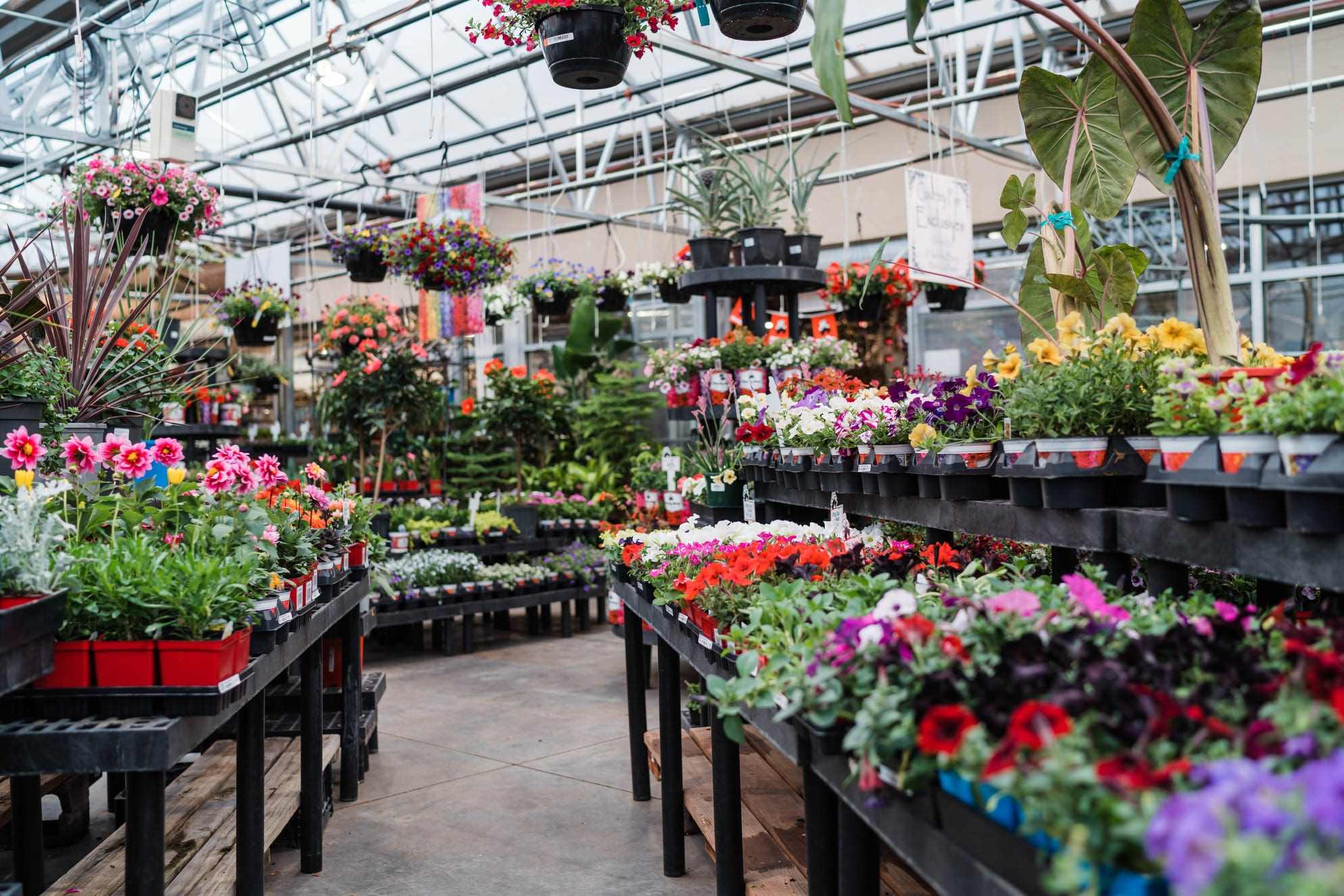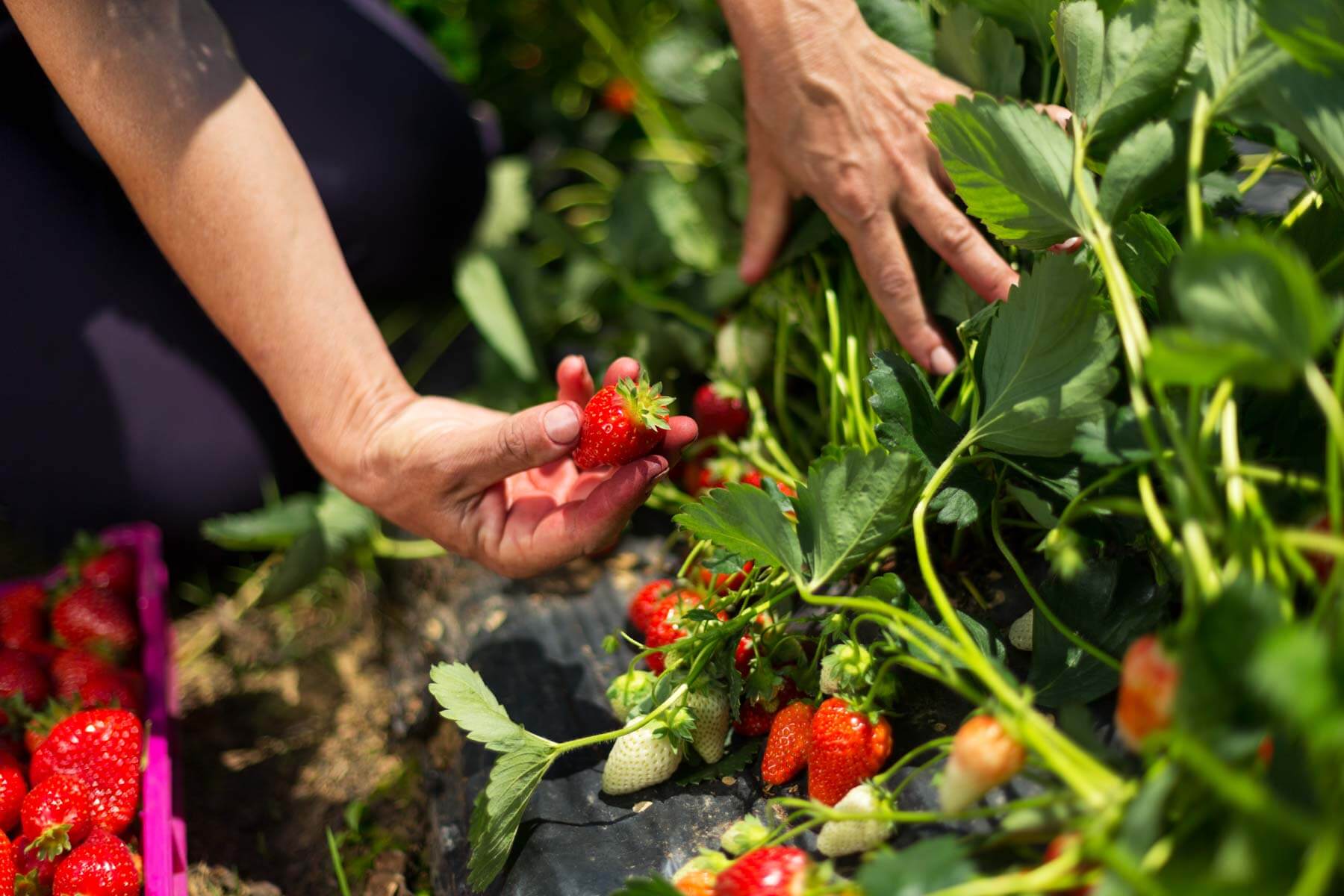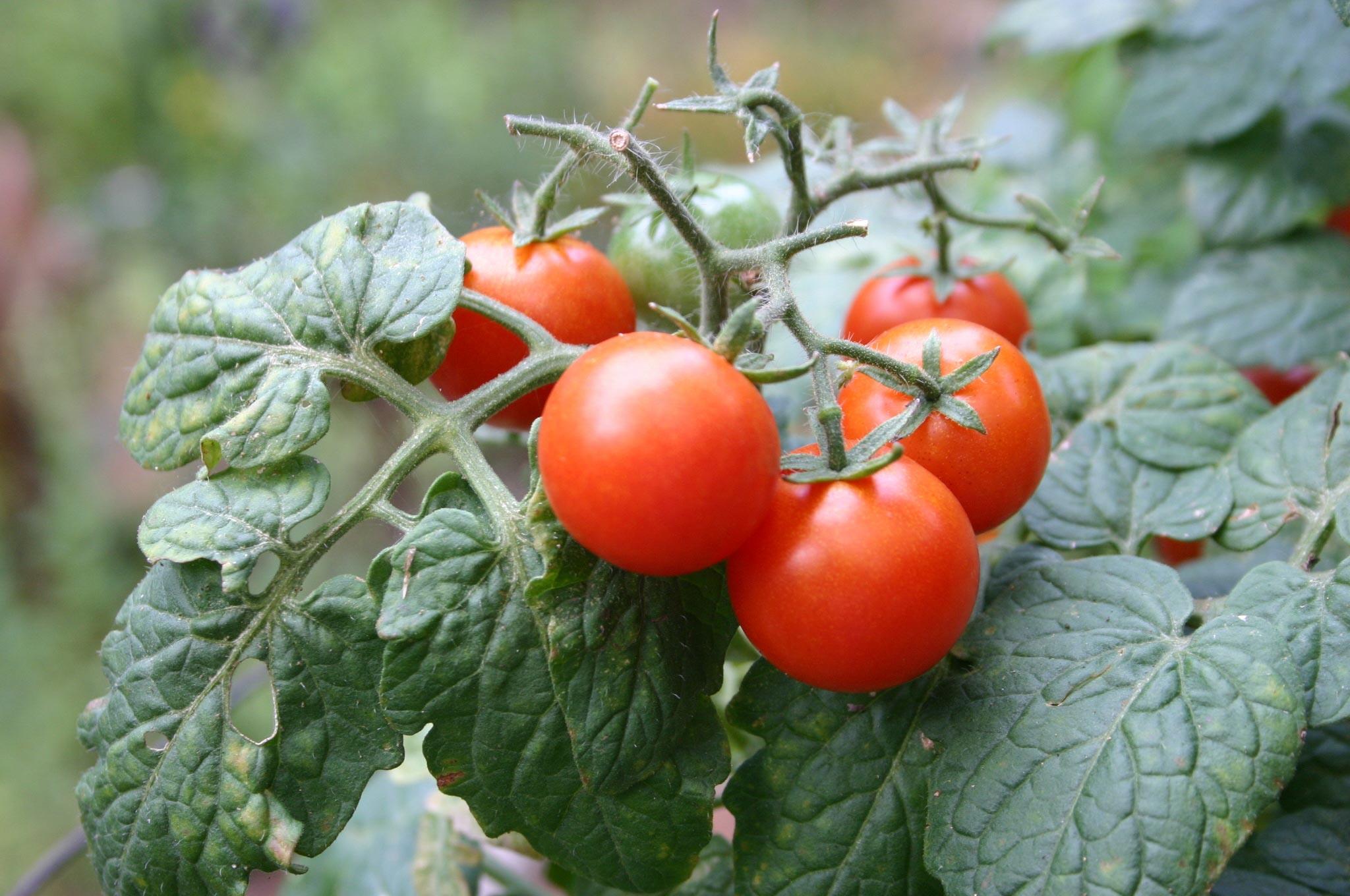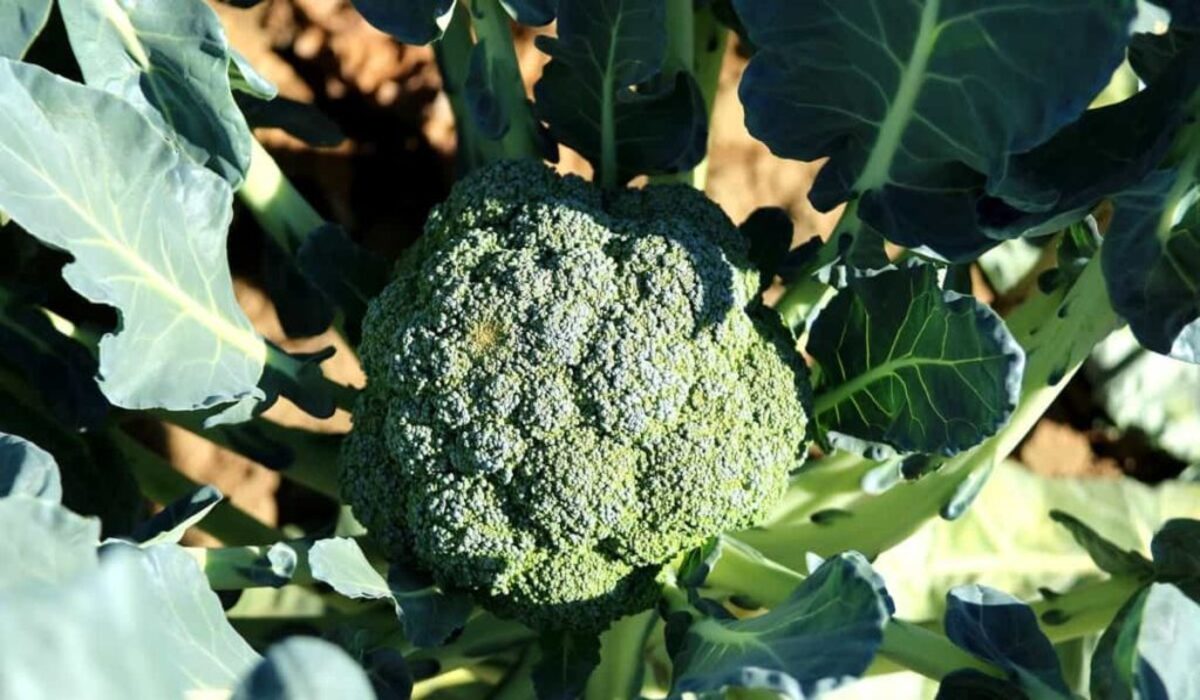Home>Gardening Techniques>Seasonal Gardening>When To Start Planting Vegetables
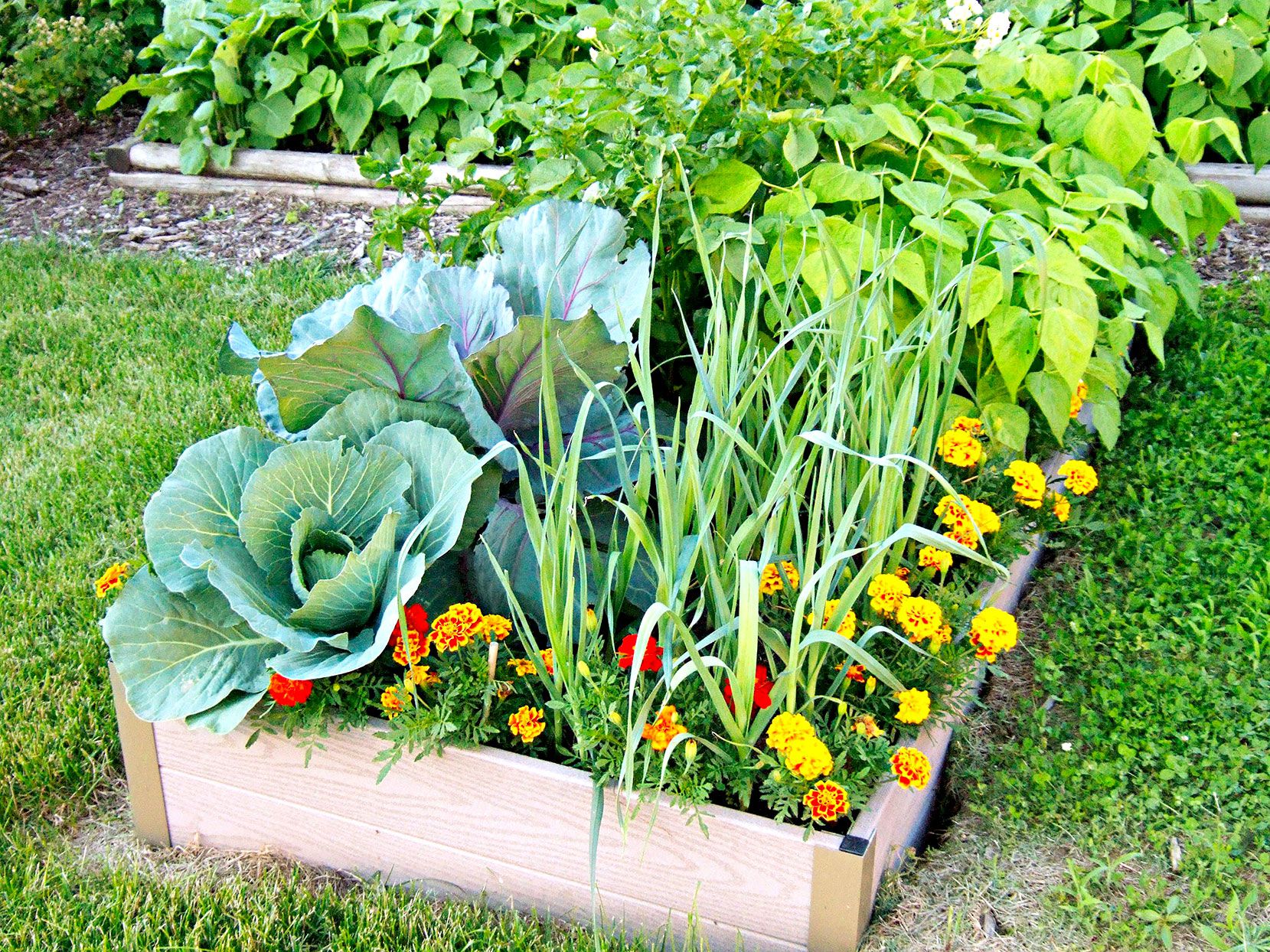

Seasonal Gardening
When To Start Planting Vegetables
Modified: January 22, 2024
Discover the ideal time for seasonal gardening as we share expert advice on when to start planting vegetables. Enhance your gardening experience and maximize your harvest.
(Many of the links in this article redirect to a specific reviewed product. Your purchase of these products through affiliate links helps to generate commission for Chicagolandgardening.com, at no extra cost. Learn more)
Table of Contents
Introduction
Welcome to the wonderful world of seasonal gardening! Gardening is not just a hobby; it’s a way to connect with nature and enjoy the fruits of our labor. If you’re new to gardening or looking to expand your gardening knowledge, you’ve come to the right place. In this article, we’ll explore when to start planting vegetables, taking into account various factors such as climate, soil conditions, and the types of vegetables you plan to grow.
Gardening is a dynamic and ever-changing activity. The timing of planting vegetables is crucial, as it determines the success of your harvest. It’s important to understand that different vegetables have different growing seasons, and it’s essential to align your planting schedule with these seasons.
In this article, we’ll discuss the various factors you need to consider when deciding the best time to start planting your vegetables. We’ll delve into the significance of climate and seasons, the condition of your soil, the specific types of vegetables you plan to grow, the process of seed germination, preparing your garden, planting techniques, caring for your plants, and ultimately, the optimal time for harvesting.
By understanding these factors and following seasonal gardening practices, you’ll be on your way to a bountiful and successful harvest. So, let’s get ready to dig in and explore the exciting world of seasonal gardening!
Factors to Consider
When it comes to planting vegetables, there are several important factors to consider. By taking these factors into account, you can ensure that your plants thrive and produce a plentiful crop. Let’s explore these factors in detail:
Climate and Season: The climate and season in your region play a crucial role in determining when to start planting vegetables. Different plants have different temperature requirements for optimal growth. Some vegetables, like tomatoes and peppers, thrive in warm weather, while others, such as lettuce and spinach, prefer cooler temperatures. Research the specific planting windows for each vegetable and align them with your local climate and season.
Soil Conditions: The health and quality of your soil directly impact the growth and development of your plants. Conduct a soil test to determine its pH levels and nutrient content. Most vegetables prefer a slightly acidic to neutral soil pH. Ensure that your soil has good drainage to prevent waterlogging. Depending on the results of your soil test, you may need to amend your soil with compost, organic matter, or fertilizers to improve its structure and fertility.
Vegetable Types: Different vegetables have different growth requirements and planting schedules. Some vegetables, like radishes and beans, have a short growing season and can be planted as soon as the soil is workable in the spring. Others, like pumpkins and Brussels sprouts, have a longer growing season and should be started indoors or planted later in the season. Understanding the specific needs of each vegetable will help you determine the best time to start planting.
Seed Germination: The germination process is an essential step in growing vegetables from seed. Depending on the vegetable, seeds may be directly sown into the garden or started indoors. The packet instructions will provide guidance on the ideal time for seed sowing. Factors such as soil temperature and moisture are crucial for successful germination. Keep in mind that some vegetables, like tomatoes and peppers, require a longer germination period and may need to be started indoors several weeks before the last frost date.
Preparing the Garden: Before planting, it’s important to prepare your garden bed properly. Clear the area of any weeds or debris and loosen the soil with a garden fork or tiller. Add organic matter, such as compost or well-rotted manure, to improve soil fertility and structure. Consider incorporating mulch to conserve moisture, suppress weeds, and regulate soil temperature. Adequate preparation ensures a nutrient-rich growing environment for your vegetables.
By considering these factors, you’ll be well-equipped to make informed decisions about when to start planting your vegetables. Taking the time to assess the climate, soil conditions, vegetable types, seed germination requirements, and garden preparation will set the stage for a successful gardening season.
Climate and Season
The climate and season in your region play a critical role in determining the best time to start planting vegetables. Different vegetables have specific temperature and sunlight requirements for optimal growth. Understanding the climate and season will help you plan and time your gardening activities effectively.
When it comes to planting vegetables, there are two main growing seasons: cool-season and warm-season. Cool-season vegetables thrive in cooler temperatures, typically between 40°F (4°C) and 70°F (21°C). Examples of cool-season vegetables include lettuce, spinach, peas, carrots, and broccoli. These vegetables can tolerate frost and are usually planted in early spring or late summer for a fall harvest.
On the other hand, warm-season vegetables require higher temperatures, usually between 60°F (15°C) and 95°F (35°C), and they cannot tolerate frost. Tomatoes, peppers, cucumbers, beans, corn, and squash are all warm-season vegetables. They are typically planted after the last frost date in spring when the soil has warmed up and there is no risk of cold temperatures damaging the plants.
It’s important to note that the timing of the last frost differs in various regions. You can find this information by consulting your local agricultural extension office or researching frost dates specific to your area. The last frost date is a crucial marker for warm-season vegetables. Planting too early can result in frost damage, while planting too late may result in a shorter growing season and reduced yield.
In addition to frost dates, understanding your region’s average annual temperature and growing season length is also important. Some regions have shorter growing seasons, necessitating the use of transplants or early-started seeds to maximize yield. In areas with longer growing seasons, you may have the luxury of planting multiple crops throughout the year.
Aside from temperature considerations, sunlight availability is another crucial factor. Most vegetables require at least 6-8 hours of sunlight per day to grow and develop properly. Take note of any shade obstacles, such as buildings or trees, that may obstruct sunlight from reaching your garden. Planning your garden layout and selecting appropriate vegetable varieties can help you optimize the available sunlight.
Being aware of your region’s climate and season is fundamental for successful vegetable gardening. By understanding the temperature requirements, frost dates, and sunlight availability, you can confidently determine the best time to start planting your vegetables and ensure they have the ideal conditions to thrive.
Soil Conditions
The health and quality of your soil are essential for successful vegetable gardening. Before planting, it’s important to assess and optimize the condition of your soil. Understanding soil pH, fertility, and drainage will help your plants grow strong and produce a bountiful harvest.
One crucial factor to consider is soil pH, which measures the acidity or alkalinity of your soil. Most vegetables prefer a slightly acidic to neutral pH level, between 6.0 and 7.0. Test your soil using a pH kit or send a sample to a local agricultural extension office for analysis. If your soil’s pH is too acidic (below 6.0), you can raise it by adding agricultural lime. Conversely, if the soil is too alkaline (above 7.0), sulfur or other acidifying amendments can be used to lower the pH. Maintaining the proper pH level ensures that essential nutrients are available for plant uptake.
Soil fertility is another critical aspect to consider. Vegetables require a rich and well-balanced supply of nutrients in order to grow and produce abundant harvests. Conduct a soil test to assess nutrient levels in your garden. Based on the results, you can supplement your soil with organic matter, compost, or specific fertilizers to provide the necessary nutrients. Organic matter, such as compost or well-rotted manure, enhances soil structure, promotes beneficial microbial activity, and improves nutrient retention. Adding a balanced organic fertilizer can further enrich the soil and support healthy plant growth.
Drainage is an often overlooked but vital factor in soil health. Adequate drainage ensures that excess water is effectively drained away from the root zone, preventing waterlogged conditions that can lead to root rot and other issues. To test your soil drainage, dig a hole about 12 inches deep and fill it with water. If the water drains within a few hours, your soil has good drainage. If it takes longer, or if the water sits in the hole without draining, your soil may have drainage problems. In such cases, amending the soil with organic matter, like compost or peat moss, can improve drainage and create a more favorable environment for vegetable roots.
Soil structure is also important for healthy plant growth. It refers to the arrangement of soil particles and the spaces or pores between them. Optimal soil structure allows for good water infiltration and retention, proper aeration, and root development. Sandy soils tend to have larger particles and drain quickly but may not retain enough water and nutrients. Clay soils, with smaller particles, can become compacted and poorly drained. The addition of organic matter, such as compost or well-rotted manure, can improve soil structure for better plant growth.
Taking the time to assess and optimize your soil conditions will provide a strong foundation for your vegetable garden. Maintaining the proper soil pH, fertility, drainage, and structure will create an environment where your vegetables can thrive, leading to healthier plants and abundant harvests.
Vegetable Types
When it comes to planting vegetables, it’s important to consider the specific types of vegetables you plan to grow. Different vegetables have different growth requirements and optimal planting times. Understanding these differences will help you plan your garden and determine the best time to start planting.
Vegetables can be broadly categorized into cool-season and warm-season varieties. Cool-season vegetables thrive in cooler temperatures and can tolerate frost. They are typically planted in early spring or late summer for a fall harvest. Examples of cool-season vegetables include lettuce, spinach, radishes, peas, carrots, and broccoli. These vegetables prefer temperatures ranging from 40°F (4°C) to 70°F (21°C) for optimal growth.
On the other hand, warm-season vegetables require higher temperatures and are sensitive to frost. They are typically planted after the last frost date in spring, when the soil has warmed up and there is no risk of cold temperatures damaging the plants. Warm-season vegetables include tomatoes, peppers, cucumbers, beans, corn, squash, and melons. These vegetables thrive in temperatures between 60°F (15°C) and 95°F (35°C) and require longer periods of daylight for optimal growth.
Within each category, there are specific varieties that have different planting and harvesting times. For example, there are early, mid, and late-season varieties of tomatoes, each with different maturity dates. By selecting varieties with different maturity times, you can stagger your harvest and enjoy a continuous supply of fresh produce throughout the season.
It’s important to consider the space requirements of each vegetable type as well. Some vegetables, like pumpkins or winter squash, require sprawling vines that can take up significant garden space. Others, like lettuce or radishes, can be planted in smaller spaces and can even thrive in containers or raised beds. Understanding the growth habits and space requirements of different vegetables will help you plan and optimize your garden layout.
Another factor to consider is companion planting. Some vegetable varieties thrive when planted next to or near certain other plants, while others may have negative interactions. For example, planting basil near tomatoes can improve the overall health and flavor of the tomatoes. On the other hand, planting onions near beans may inhibit the growth of the beans. Researching and incorporating companion planting techniques can benefit your vegetable garden by enhancing pest control, promoting pollination, and improving overall plant health.
By considering the specific types of vegetables you plan to grow, their growth requirements, space needs, and any companion planting considerations, you can create a well-organized and productive vegetable garden. Understanding these vegetable types and their characteristics will help you determine the optimal planting schedule for each and set the stage for a successful growing season.
Seed Germination
Seed germination is a crucial step in the journey of growing vegetables. Understanding the process and requirements for seed germination will help you start your plants off on the right foot and ensure better success in your garden.
The first step in seed germination is selecting high-quality seeds. Look for reputable seed suppliers and choose seeds that are fresh, disease-free, and suited for your specific region and garden conditions. Some vegetables, like tomatoes and peppers, benefit from starting seeds indoors several weeks before the last frost date, while others can be sown directly into the garden.
Proper soil temperature is essential for successful seed germination. Each vegetable has an ideal temperature range for germination, and planting too early or too late can result in poor or no germination at all. Consult the seed packet or gardening resources to determine the ideal soil temperature for the specific vegetable you are planting. Using a soil thermometer can help you accurately measure the temperature.
Another critical factor for successful seed germination is moisture. Seeds need to be adequately hydrated to stimulate germination. Before sowing the seeds, ensure that the soil is moist, but not waterlogged. After planting, lightly water the soil to maintain the right level of moisture. Using a spray bottle or misting the soil can help prevent the seeds from being dislodged or buried too deeply.
Some seeds require specific lighting conditions for germination. While most vegetable seeds germinate best in darkness, there are a few exceptions. Examples include lettuce and celery, which benefit from exposure to light during germination. Again, consult the seed packet or gardening resources to determine if any specific light requirements exist for the seeds you are planting.
Germination time can vary depending on the vegetable. Some seeds, like radishes or lettuce, will germinate within a week or two, while others, like tomatoes or peppers, may take longer. Patience is key during this stage, as factors such as temperature and seed viability can influence germination time. Be sure to keep the soil consistently moist and monitor the progress of germination.
Once the seeds have germinated and sprouted, it’s important to provide proper care and maintenance. Ensure adequate sunlight, water, and proper spacing for the young seedlings. As the seedlings grow, you may need to thin them out to provide enough space for each plant to develop properly.
Understanding the process of seed germination and providing the optimal conditions for your seeds will give them the best chance to sprout and develop into healthy seedlings. By following the recommended temperature, moisture, and lighting requirements, you can ensure a successful start to your vegetable garden.
Preparing the Garden
Before you start planting your vegetables, it’s essential to prepare your garden properly. The preparation process sets the foundation for a healthy and productive growing environment. Taking the time to prepare your garden will ensure that your plants have the best chance of thriving and producing a bountiful harvest.
The first step in preparing your garden is clearing the area of any weeds, debris, or previous plant residues. Weeds compete with your vegetables for nutrients, water, and sunlight, so it’s important to remove them to give your vegetables a competitive edge. Remove any large rocks, sticks, or other debris that could interfere with planting or hinder root growth.
After clearing the area, it’s time to assess your soil and make any necessary amendments. Consider conducting a soil test to determine its pH levels and nutrient content. Soil testing will help you understand if any adjustments need to be made to optimize soil fertility and structure. Based on the results, you may need to add organic matter, such as compost or well-rotted manure, to improve soil structure and provide essential nutrients for your plants.
Consider adding a layer of organic mulch on top of your soil. Mulch helps to retain moisture, regulate soil temperature, suppress weeds, and improve overall soil health. Organic mulches, like straw, shredded leaves, or grass clippings, break down over time and add valuable organic matter to the soil.
Take the time to plan and lay out your garden properly. Consider factors such as crop rotation, companion planting, and spacing requirements. Crop rotation involves alternating the planting of different plant families to help prevent the buildup of pests and diseases in the soil. Companion planting involves pairing compatible plants together to promote healthy growth or repel pests. Spacing requirements vary depending on the vegetables you are growing, so be sure to follow the recommended guidelines to allow each plant enough space to grow and access necessary sunlight and nutrients.
Consider installing support structures, such as trellises or stakes, for vining or tall-growing plants. These structures provide support for plants like tomatoes, cucumbers, or beans, ensuring proper growth and minimizing damage to fruits or vegetables from contact with the ground. Be sure to install these structures before planting to avoid damaging the plant’s roots.
Remember to water your garden beds thoroughly before planting. Properly moistening the soil will provide a good environment for seed germination and encourage the healthy establishment of transplants. Ensure that the soil is evenly damp but not overly saturated.
By taking the time to clear, assess, and prepare your garden, you provide your vegetables with a nurturing environment. Clearing away weeds and debris, amending the soil as needed, incorporating mulch, planning the layout, and providing necessary support structures will set the stage for a successful gardening season and increase the likelihood of a plentiful harvest.
Planting Techniques
Once your garden is prepared, it’s time to plant your vegetables using proper techniques. Planting techniques can vary depending on the type of vegetable and the specific growing requirements. By following the right planting techniques, you can optimize the growth and development of your plants and increase your chances of a successful harvest.
Here are some key planting techniques to consider:
Seed Depth: When planting seeds, it’s crucial to sow them at the appropriate depth. The general rule of thumb is to plant seeds at a depth that is two to three times the diameter of the seed. Smaller seeds are typically planted more shallowly, while larger seeds can be planted deeper. Follow the recommendations on the seed packet for specific depth guidelines for each vegetable.
Seed Spacing and Thin Out: Proper spacing is important to allow each plant adequate room to grow and access sunlight and nutrients. Refer to the plant spacing guidelines for each specific vegetable variety. Once the seedlings emerge, thinning out is often necessary to maintain the recommended spacing. Carefully remove excess seedlings, leaving behind the strongest and healthiest plants.
Transplanting: When transplanting seedlings, handle them carefully to avoid damaging the delicate roots. Dig a hole that is slightly larger than the plant’s root ball and gently place the seedling into the hole. Firm the soil around the base of the plant to ensure good contact between the roots and the soil. Water the transplants thoroughly to settle the soil and help roots establish quickly.
Watering: Proper watering is crucial during the planting phase to encourage seed germination or help transplants establish themselves. Water the soil thoroughly after planting seeds or transplanting seedlings to ensure that the roots have access to moisture. Be sure to water consistently, keeping the soil evenly moist but not waterlogged. Pay attention to individual plant water needs and adjust your watering accordingly.
Fertilizing: Providing the right nutrients is important for healthy plant growth. Before planting, incorporate organic matter, such as compost or well-rotted manure, into the soil to provide a slow-release source of nutrients. Avoid applying concentrated fertilizers near seedlings, as they can burn the young roots. Once your plants have established themselves, you can consider applying liquid fertilizers or organic fertilizers according to the recommended guidelines for each vegetable.
Support and Stake: Certain vegetables, such as tomatoes, beans, and cucumbers, may require support structures or staking. Install these support structures at planting time to avoid damaging the roots later. Tie the plants to the support gently as they grow to ensure proper support and avoid breakage.
By following these planting techniques, you can ensure that your vegetables are set up for successful growth and development. Pay attention to proper seed depth, spacing, and thinning out. Handle seedlings with care during transplanting, and provide adequate water, nutrients, and support structures as needed. Implementing these techniques will give your vegetables the best chance of thriving and producing a fruitful harvest.
Care and Maintenance
Caring for your vegetable garden is crucial to ensuring healthy plant growth and maximizing your harvest. Regular maintenance tasks, such as watering, fertilizing, weeding, and pest control, will help your plants thrive and minimize the risk of diseases and pests. By implementing proper care and maintenance practices, you can support the overall health and productivity of your garden.
Here are some key care and maintenance tasks to consider:
Watering: Consistent and appropriate watering is essential for the health of your plants. Water deeply, ensuring that the soil is moist to a depth of a few inches. Avoid excessive watering, as it can lead to waterlogged soil and root rot. Consider watering in the early morning or evening to minimize evaporation and allow foliage to dry before nighttime, reducing the risk of fungal diseases.
Fertilizing: Provide your plants with the nutrients they need to thrive. Consider using organic fertilizers or compost to promote healthy growth. Follow the recommended guidelines for each vegetable in terms of timing and application rates. Be mindful not to over-fertilize, as this can result in excessive foliage growth at the expense of fruit production.
Weeding: Regularly remove weeds to prevent competition for nutrients, water, and sunlight. Weed diligently, especially during the early stages when plants are young and vulnerable. Use mulch to suppress weed growth and conserve soil moisture.
Pest Control: Monitor your plants regularly for pests and take appropriate measures to control them. Inspect both the upper and undersides of leaves, as well as the stems and fruits. Remove pests manually if feasible, or consider organic pest control methods such as neem oil, insecticidal soaps, or companion planting. Encouraging beneficial insects, such as ladybugs and lacewings, can also help control pests.
Support and Pruning: As your plants grow, provide appropriate support systems, such as stakes or trellises, to help keep them upright and prevent damage. Prune your plants, removing dead or diseased foliage, and thin out crowded areas to improve air circulation. This can help reduce the risk of diseases and improve the overall health of your plants.
Monitoring and Problem-Solving: Regularly monitor your plants for any signs of distress, such as wilting, discoloration, or abnormal growth. Promptly address any issues that arise, such as nutrient deficiencies, diseases, or pest infestations. Research and seek advice from local gardening resources or experts to help identify and address specific problems effectively.
By implementing these care and maintenance tasks, you can provide your vegetable garden with the attention it needs to thrive. Regular watering, fertilizing, weeding, pest control, and vigilant monitoring will help ensure healthy plant growth and increase your chances of a successful and bountiful harvest.
Harvesting Time
Knowing when to harvest your vegetables is crucial to enjoy them at their peak flavor and texture. Each vegetable has different signs that indicate it is ready for harvest, such as color, size, and texture. Harvesting at the right time ensures the best taste and quality of your homegrown produce. Here are some general guidelines for harvesting common vegetables:
Lettuce and Leafy Greens: Harvest loose-leaf lettuce and other leafy greens by snipping off the outer leaves when they are large enough to consume. This allows the center leaves to continue to grow. For head lettuce, wait until the heads are firm and fully formed, then cut them off at the base of the plant.
Tomatoes: Harvest tomatoes when they are fully colored and slightly soft to the touch. Avoid picking them when they are still green and firm, as they will not reach their full flavor. Twist or cut the stem just above the calyx to remove the tomato from the plant.
Peppers: Harvest bell peppers when they are fully mature and glossy. They should have a firm texture and vibrant color. Using a sharp knife or scissors, cut the peppers off the plant, leaving a small portion of the stem attached.
Cucumbers: Harvest cucumbers when they are firm and have reached the desired size. Pick them regularly to encourage continuous production. Cut or gently twist the cucumbers off the vine, being careful not to damage the plant.
Beans: Harvest beans when the pods are plump and firm, but before the seeds inside fully mature and become tough. Snap the beans off the plant using your fingers or a pair of shears.
Carrots: Harvest carrots when they have reached the desired size and color. Gently loosen the soil around the roots and pull them out. If the soil is compacted, use a garden fork to avoid breaking the carrot roots.
Broccoli and Cauliflower: Harvest broccoli and cauliflower when the heads are fully formed but before the individual florets begin to separate. Cut the heads off the plant, making a clean diagonal cut just below the head.
These are just a few examples, and harvesting specifics can vary depending on the specific variety and growing conditions. It’s important to consult the seed packet or gardening resources for specific harvesting guidelines for the vegetables you are growing. Keep in mind that regular harvest and removal of mature produce also encourages the continuous production of fruits and vegetables.
Pay attention to the weather when planning your harvest. Vegetables are usually tastiest when picked early in the day and during cooler temperatures. Avoid harvesting after heavy rains, as excess moisture can affect the quality and promote disease development.
Enjoy the fruits of your labor by harvesting your vegetables at the proper time. By following these guidelines, you can ensure that you are harvesting your homegrown produce at its peak ripeness and flavor, adding a satisfying finale to your gardening journey.
Conclusion
Seasonal gardening holds a world of possibilities, allowing you to connect with nature, cultivate your own food, and enjoy the satisfaction of a successful harvest. Understanding the factors that influence planting times, such as climate, soil conditions, and the specific needs of different vegetable types, is key to a thriving garden. By considering these factors, you can make informed decisions about when and how to plant your vegetables for optimal growth and productivity.
The climate and season in your region play a significant role in determining the best time to start planting vegetables. Cool-season and warm-season varieties each have their specific temperature requirements and success in different growing periods. Paying attention to frost dates, sunlight availability, and average annual temperatures will help you plan your planting schedule effectively.
Soil conditions are crucial for the health and development of your plants. Conduct a soil test to determine its pH, fertility, and drainage characteristics. By amending the soil with organic matter and optimizing its structure, you provide the necessary nutrients and water retention capacity for your vegetables to grow and thrive.
Consider the specific types of vegetables you plan to grow, as they have different growth requirements and optimal planting times. Aligning your planting schedule with the needs of cool-season or warm-season vegetables, as well as considering crop rotation and companion planting, will contribute to healthier plants and higher yields.
Understanding the process of seed germination and implementing proper planting techniques are essential. Sowing seeds at the correct depth, providing optimal moisture and lighting conditions, and caring for your plants during the early stages will establish a strong foundation for successful growth.
Proper preparation and care are key to maintaining the health of your garden. Clearing the area, amending the soil, and planning your garden layout will set the stage for success. Regular care and maintenance tasks, such as watering, fertilizing, weeding, and pest control, ensure healthy plant growth and help prevent diseases and pests from damaging your crops.
Finally, knowing when to harvest your vegetables allows you to enjoy them at their peak flavor and quality. Different vegetables have specific signs and criteria to determine their readiness for harvest. By harvesting at the right time and following proper harvesting techniques, you can savor the fruits of your labor and experience the delicious rewards of your seasonal garden.
Seasonal gardening is a journey that requires patience, observation, and adaptability. It’s an opportunity to connect with the natural world, nurture your plants, and reap the rewards of your efforts. By utilizing the knowledge and techniques shared in this article, you can embark on a successful and rewarding gardening experience that will fill your table with fresh, homegrown vegetables throughout the seasons.
